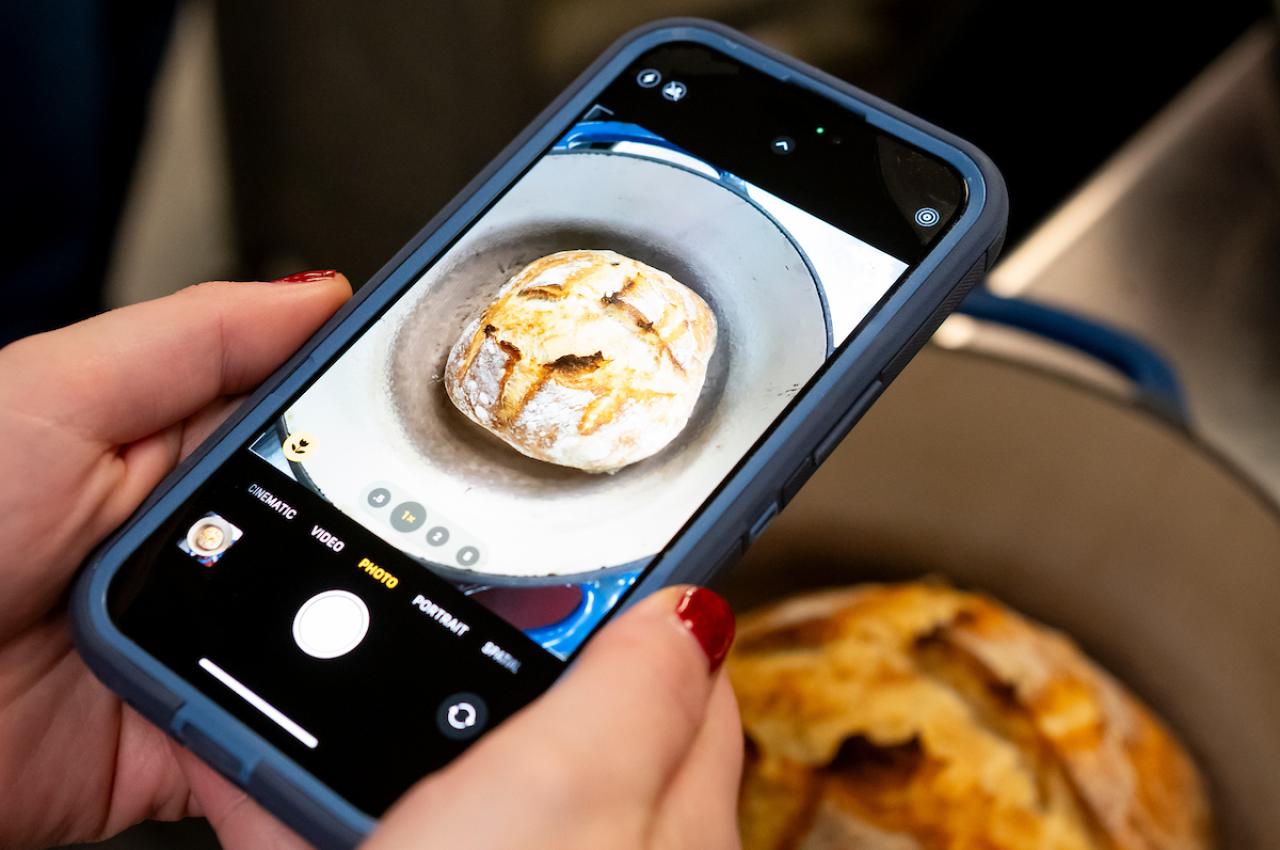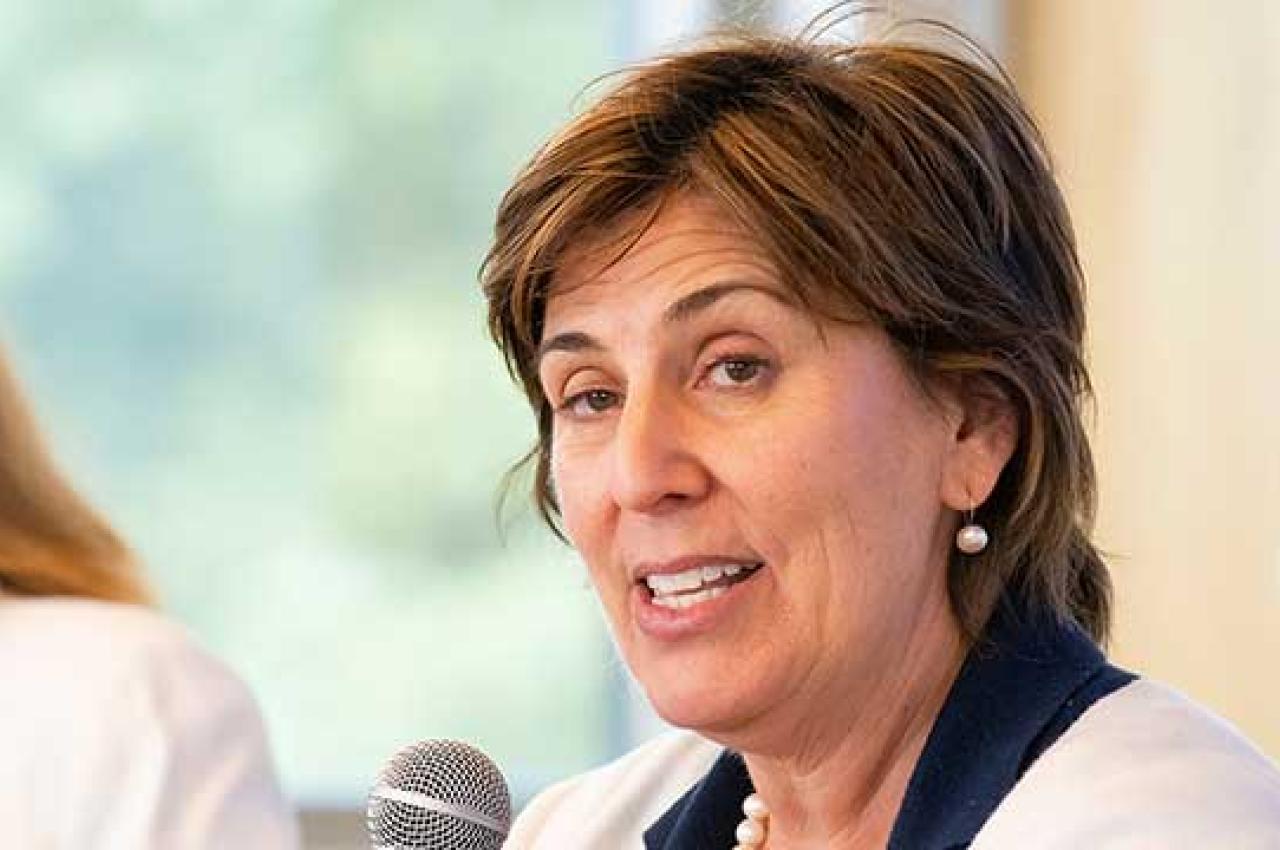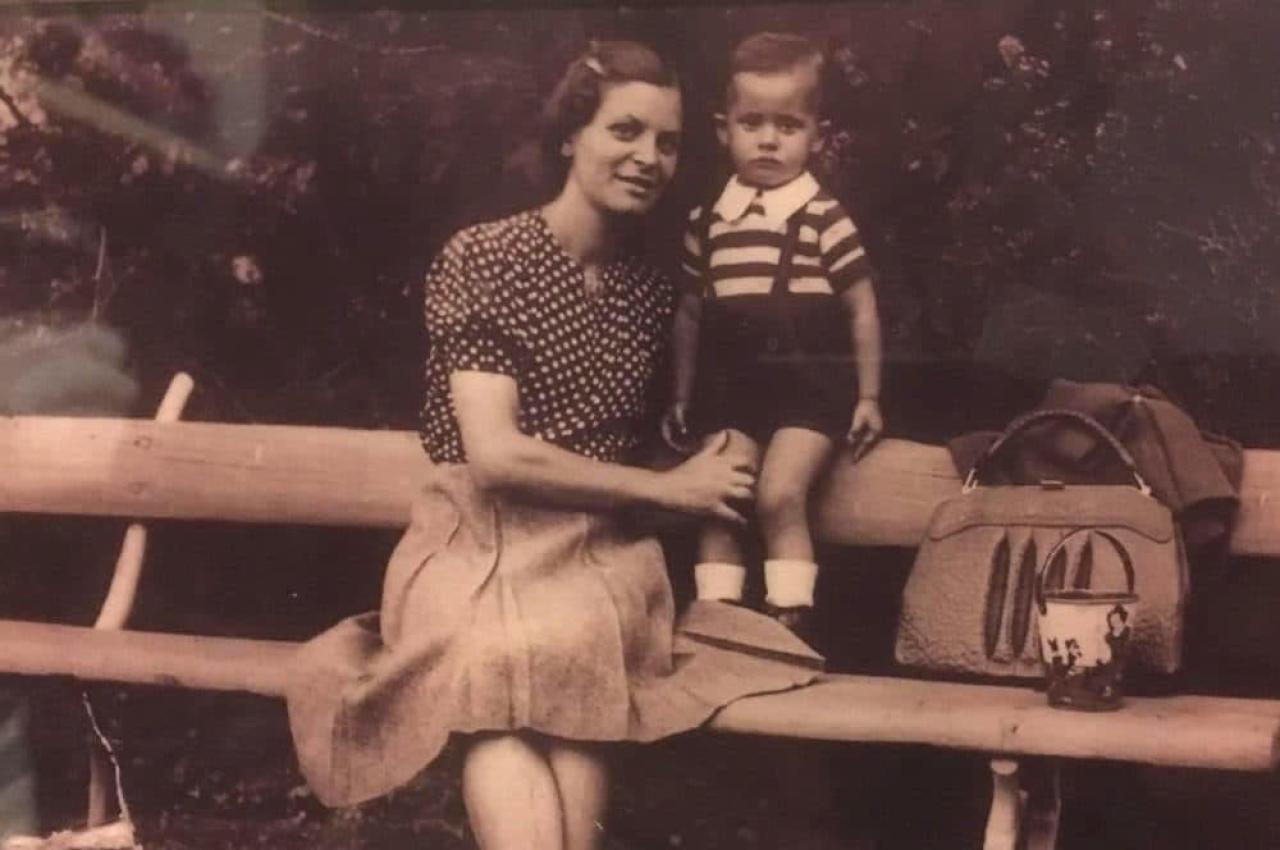Fun with Fermentation
Excitement and the smell of freshly baked bread filled the kitchen of the Kindlevan Café in the Science and Engineering Complex on a Tuesday night during spring semester.
More than a dozen students—a mix of biochemistry, biology, economics, and computer science majors—had gathered for an Experimental College class called “Fermentation: A Journey Through Cultures, Chemistry, and Commerce.”
But students weren’t studying how the yeast in a sourdough starter converts starches and sugars into carbon dioxide and acids, or discussing the history of this oldest of leavened breads. Instead they were kneading, folding, and scoring dough, marveling at how it felt under their fingers, and exclaiming at how much it resembled a bakery loaf.
Chemical engineering major David Gillingham, E25, (second from right) gives instructions to Stephen Albright, E25 (far left) as he and his group prepare dough from a sourdough starter during their ExCollege fermentation class in spring 2025. Also looking on are (from left) AJ Papes, E25, Dylan Patel, E25, Tristan Marble, A25, and Jack Zimmerman, A25. Photo: Alonso Nichols
Applied fermentation is the ideal Trojan horse for learning, said chemical engineering majors David Gillingham and Dylan Patel, both E25, who co-taught the class.
“It’s a fun way to present certain areas of chemical engineering, history, and metabolism in an environment that feels a lot more real, and frankly a lot more interesting,” said Gillingham, who studies synthetic yeast-bacteria interactions for therapeutic applications, and has made his own beer, hot sauce, sauerkraut, and kimchi.
Besides sourdough, students also made their own kombucha, which involved adding a SCOBY (symbiotic culture of bacteria and yeast) to black tea, and a week later adding ginger and fruits to the brew before bottling it.
“Fermentation is actually our original preservation tool, and it’s accessible way to enter the biotech realm, while making food for friends and having this community around fermentation,” said Patel, whose research focuses on optimizing and scaling up biochemical processes for therapeutic drugs or other industrial uses.
A students prepares dough from a sourdough starter during an ExCollege fermentation class in spring 2025. Photo: Alonso Nichols
When they weren’t in the Kindlevan kitchen, the class was at the ExCollege house on Professors Row, talking about the process of making beer, or the dynamics between gender, religion, and fermentation, or simply going around and listing the last fermented thing each person had consumed.
Envisioning an interdisciplinary class, Gillingham and Patel hoped for a diverse range of students—and got one, they said. Asked for one way their area of study could apply to fermentation, students gave 10 distinct answers, from science engineering to business marketing.
One student had done an internship at a fermentation startup and another baked her own sourdough, which had Patel and Gillingham doing some learning of their own. “One of our students, Sophia, during the bread stuff, I’d go over and ask, ‘what do you do during this part?’” Gillingham said. “Because that’s kind of her wheelhouse.”
Kinsey Ellis, A25, Pun Sangruji, A25, and Sophia Lauterbach, E25, prepare dough from a sourdough starter during their spring 2025 ExCollege fermentation class. Photo: Alonso Nichols
Fermentation became trendy during the early days of the COVID-19 pandemic, Gillingham said—for good reason. “What I really love about fermentation is that it’s kind of a balance between a science and an art,” said Gillingham, who’s starting a Ph.D. in chemical engineering at MIT in the fall.
His interest in fermentation goes back to birth. His mother brewed special batches of beer while she was expecting him and his older brother, to celebrate their births with family, friends, and hospital staff after hours. The case of beer in the corner of the delivery room did not create a good first impression with the doctors and nurses, Gillingham said, but later it became clear that that it was merely a friendly gesture of goodwill.
Gillingham helped his mom brew as a teenager and went on to become a home brewer himself.
Center: Mark DeMichaelis, A25, and Anisha Uppal-Sullivan, A25, check out freshly baked loaves of sourdough bread during their ExCollege fermentation class in speing 2025. Also seen are Pun Sangruji, A25, and YiMin Fullam, A25. Photo: Alonso Nichols
Fermentation isn’t all art and celebration. While the class’s sourdough turned out picture-perfect, they had to scrap their kombucha due to possible contamination.
But even this mishap became a lesson, with Patel pointing out the puffy film dotted with yeast “gumdrops” on top of the brew (normal), and the orange patch that had formed in the middle of the film (not normal). Students also discussed ways unwelcome bacteria might have gotten into the brew, and measures to avoid contamination such as properly cleaning the vessel and wearing a mask.
Before putting the kombucha away, Patel asked, “Does anyone have anything they’d like to say about it?”
A pause. Then one student said, “It looks terrible.”
“Hey!” Patel said, as the others laughed. “You made it.”
Latest Tufts Now
- New Approach to Alternative Energy Sources for College CampusesAt Tufts, state officials, higher education representatives, and energy experts highlight new regulations that could improve access to geothermal energy and lower costs for all
- I Protected My Children from Our Holocaust History. But Then They Grew UpIn Serbia’s capital, my daughter and I learned side by side about my father’s wartime experience—and our family’s heartbreak
- In Alaska, an Engineering Student Unlocks the Power of StoriesHaniye Safarpour listens when people talk about life with, and without, water
- The Unending War in UkraineDespite more than three years of brutal conflict, Ukrainians are still mostly unified in fighting off Russian invaders, says political scientist
- What Mamdani’s Victory Says About Engaging Gen Z VotersHis campaign drew a surge of new voters, including young people. Will the youth vote help shape the 2026 midterms, too?
- TB Bacteria Play Possum to Evade VaccinesGenetic study reveals how Mycobacterium tuberculosis survives in vaccinated or previously infected hosts













